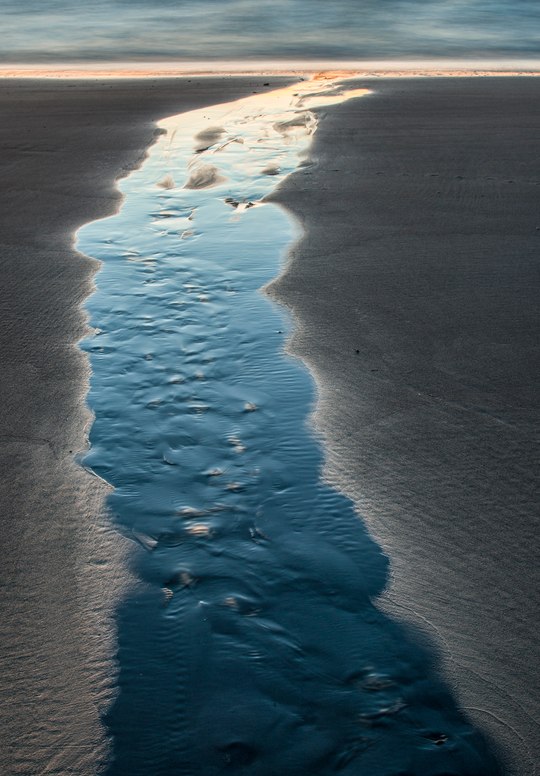Flowing across the tidal flats during twilight’s low tide, this stream faithfully mirrors the colors of the sky, transitioning from the deep blue of the zenith, to the lingering orange hues of the horizon after sunset. As the tide recedes, these sinuous streams emerge from the base of the cliffs bordering Lincoln Beach, blending the freshwater seeping from the berm with the ocean water released from beneath the intertidal sand. Some streams reach the ocean’s edge, while others fade into the sand.
In this photograph, the high concentration of black ilmenite rock grains darkens the wet sand, lending vivid radiance to these tidal streams. Ripples appear where the stream meets the edge of the sand, and in its center, small waves known as “antidunes” form and travel upstream. The channel carries organic matter into the ocean that nourishes marine life, while land-bound creatures simply enjoy watching them flow.
This expansive flat beach, framed by a forest of Sitka spruce, has a long history of habitation and visitation, beginning with the Coastal Salishan tribes, whose archaeological evidence indicates they inhabited Oregon’s coast for at least several thousand years. Explorers like Sir Francis Drake (1597) were followed by others of European descent who arrived by land and sea. The first known instance of tourism at Lincoln Beach took place in 1837 when two couples traveled by horseback from the Willamette Valley to spend several weeks on an extended honeymoon, enjoying the ocean and cooking clam and fish dinners. Almost two centuries later, modern visitors still travel here seeking the same kind of experience.
Location research and commentary by James Baker.

